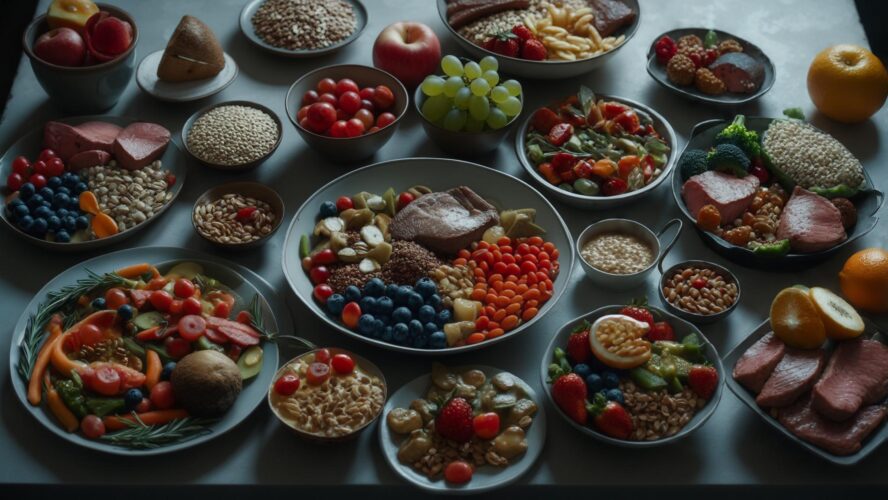
Table of Contents
- The Real Reason Most 2000-Calorie Plans Fall Apart (Hint: It’s Not Your Willpower)
- Your Brain on Food: Why You Keep Sabotaging Your Own Success
- Why Your Friend’s Amazing Results Won’t Work for You (And That’s Totally Normal)
- How to Make This Actually Work in Real Life
TL;DR
- Your body processes food completely differently throughout the day – working with this instead of against it changes everything
- Most meal plan failures happen between your ears, not in your kitchen – understanding your food psychology is huge
- Your genetics and gut bacteria mean you’ll never respond to food exactly like someone else (which is why cookie-cutter plans suck)
- Flexible approaches beat rigid rules every single time – build in wiggle room from day one
- Track how you actually feel, not just what the scale says – energy and mood tell you way more
The Real Reason Most 2000-Calorie Plans Fall Apart (Hint: It’s Not Your Willpower)
You know that feeling when you start a new meal plan super excited, only to find yourself stress-eating cookies three weeks later? Yeah, I’ve been there too. And here’s what I wish someone had told me: the problem isn’t your willpower or dedication. It’s that most plans treat your body like a simple calculator when it’s actually more like a sophisticated, moody engine that changes its mind about what it wants every few hours.
I spent months perfectly calculating my meals, hitting my 2000-calorie target every day, and wondering why I felt like garbage and wasn’t seeing results. Turns out, I was completely ignoring one crucial thing: when I ate mattered just as much as what I ate.
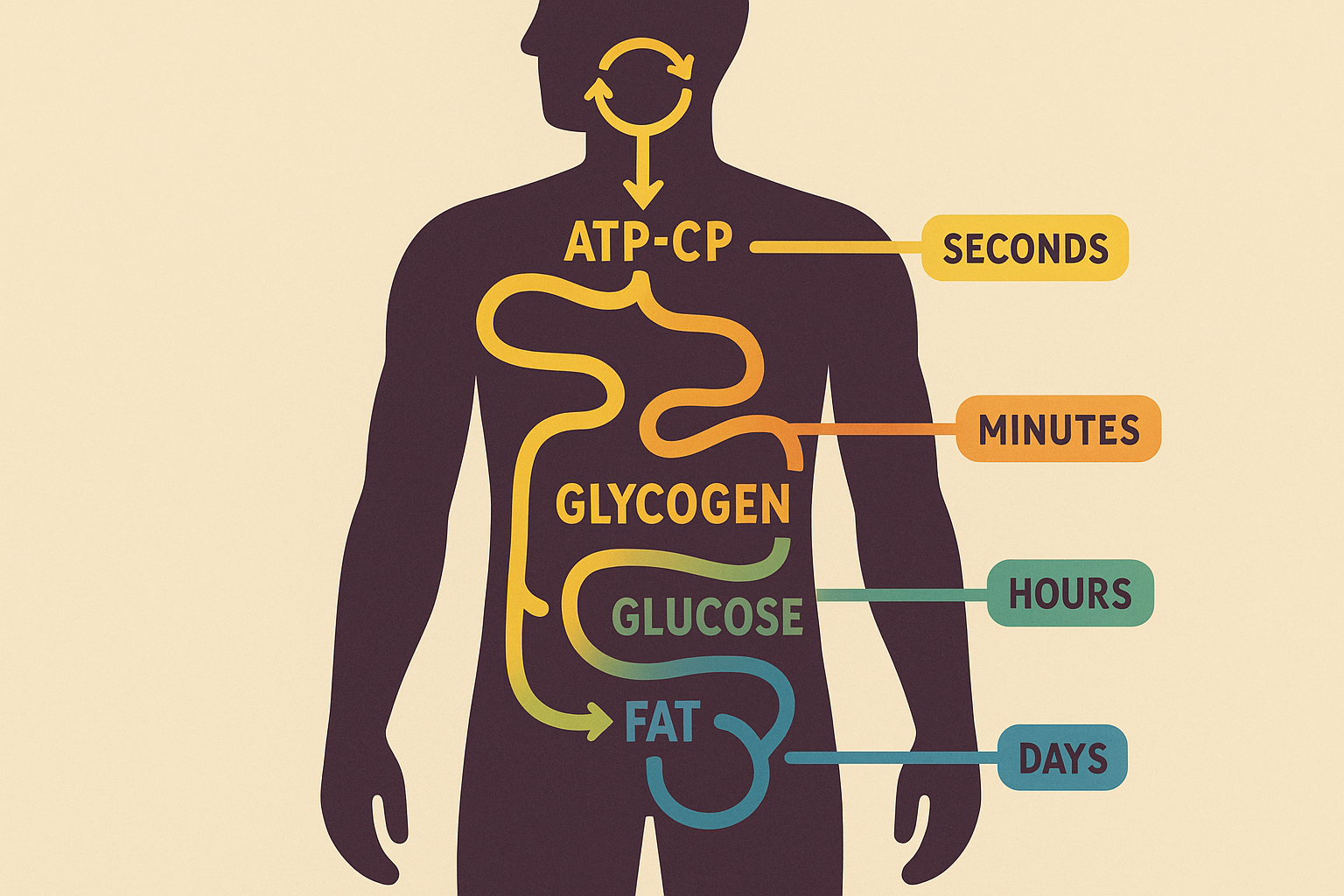
Your Body’s Weird Daily Schedule (And Why Fighting It Makes Everything Harder)
Here’s something cool I learned the hard way: your body processes a bowl of oatmeal totally differently at 7 AM versus 7 PM. Who knew timing mattered so much? I discovered this after months of frustrating plateaus where I’d eat the exact same foods but feel completely different depending on when I had them.
Your body isn’t just sitting there waiting for food – it’s constantly switching between different fuel preferences based on your hormones, energy needs, and even what time of day it is. Once I started paying attention to these natural rhythms instead of fighting them, everything got so much easier.
Understanding how to find your carb tolerance becomes super helpful when you’re trying to figure out the best times to eat different foods. Your body’s ability to handle carbs changes dramatically throughout the day.
| Time Window | What Works Best | What’s Happening | Good Food Choices |
|---|---|---|---|
| 6-9 AM | Carbs are your friend | Your body loves burning carbs right now | Oats, fruits, whole grains |
| 12-2 PM | Mix it up | You need sustained energy | Lean protein + some carbs |
| 3-5 PM | Protein + healthy fats | Avoiding the afternoon crash | Nuts, seeds, lean meats |
| 6-8 PM | Keep it lighter | Your body’s winding down | Fish, chicken, lots of veggies |
Morning Magic: Why Your Body Actually Wants Carbs at Breakfast
Between 7-9 AM, your stress hormone cortisol naturally spikes (in a good way), creating perfect conditions for your body to actually use those carbs instead of storing them. I started front-loading most of my daily carbs during this window, and honestly? It was like flipping a switch. My energy stayed steady all day, and I stopped having those brutal afternoon sugar cravings.
Learning how to cook delicious oatmeal every time became my secret weapon for maximizing this morning sweet spot. Steel-cut oats give you that slow, steady energy release that works perfectly with your body’s natural rhythm.
My friend Sarah was basically living on coffee and willpower by 3 PM every day. Then she tried something super simple: eating 60% of her daily carbs before 9 AM (steel-cut oats with berries and a drizzle of honey). Within two weeks, she stopped reaching for the vending machine, and after two months, she’d lost 12 pounds while still hitting her 2000-calorie target. The crazy part? She wasn’t even trying that hard.
Evening Switch: Why Protein and Fat Become Your Best Friends After Dark
As your cortisol drops in the evening, your body shifts into repair mode. This is when protein and healthy fats become your metabolic allies, helping with overnight muscle recovery while keeping your blood sugar stable so you actually sleep well. People who figure this out sleep better and wake up with way more energy.
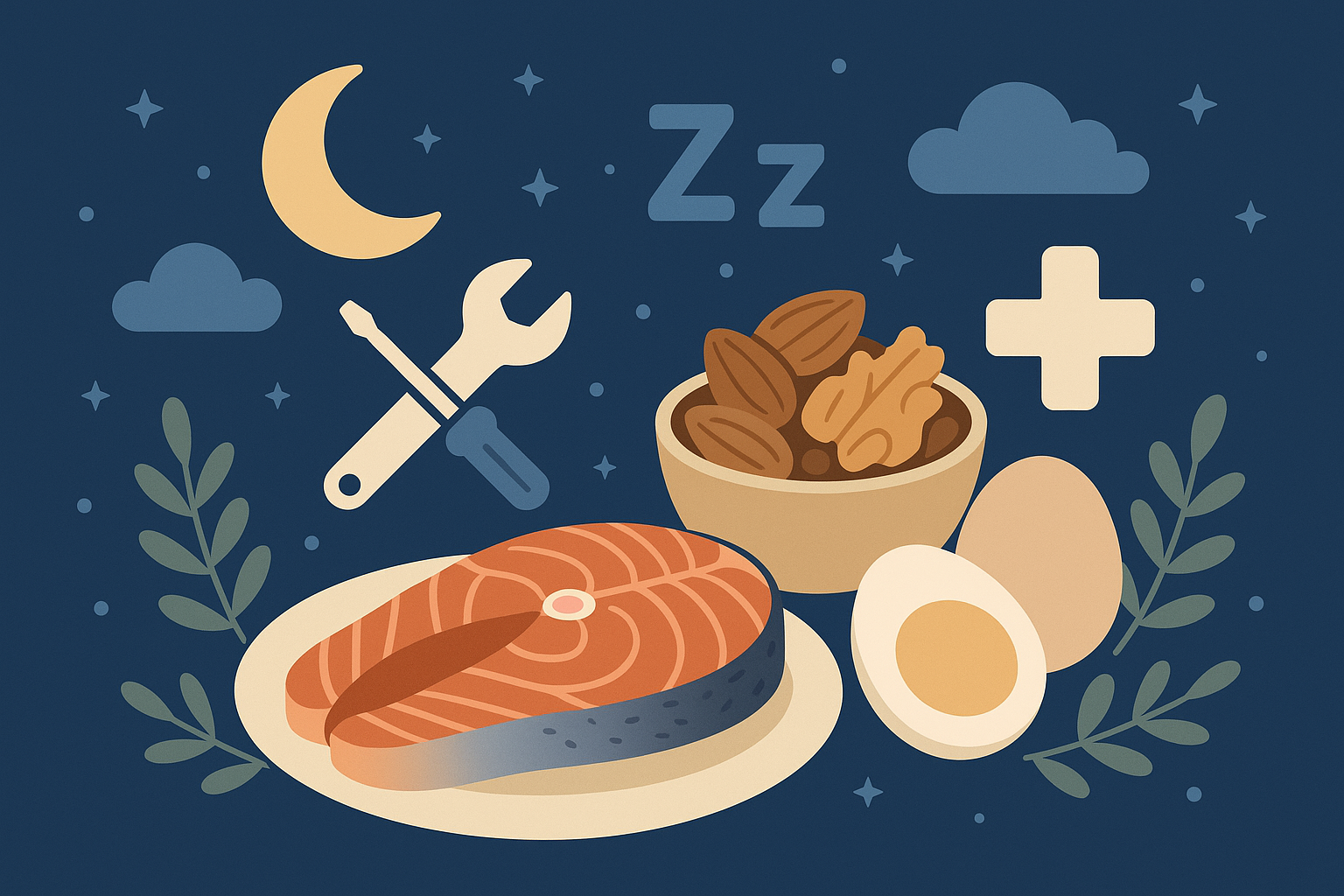
I started prioritizing lean proteins with non-starchy veggies after 6 PM, and the difference in my sleep quality was honestly shocking. Turns out what you eat for dinner directly impacts whether you’ll toss and turn all night or wake up feeling actually rested.
The Lunch Reality Check: Your Afternoon Energy Insurance Policy
Lunch is basically your chance to either set yourself up for a productive afternoon or guarantee you’ll be face-planting into your desk by 3 PM. The foods you choose here can either keep your brain sharp or send you straight into that “I need sugar NOW” spiral we all know and hate.
I learned to think of lunch as my afternoon energy insurance policy. Combining lean protein with some complex carbs and healthy fats keeps my blood sugar steady and my brain actually functioning through those post-lunch hours when everything usually goes sideways.
Making Every Calorie Count (Because 2000 Isn’t That Many)
When you’re working with exactly 2000 calories, every single one needs to earn its place on your plate. This doesn’t mean obsessing over every morsel – it means getting smart about choosing foods that actually make you feel good while supporting your goals.
The “Bang for Your Buck” Approach to Food Choices
Some foods are nutritional powerhouses that pack way more vitamins and minerals per calorie than others. Once I started building my meals around these foods, I noticed I felt way better even though I wasn’t eating more calories. It’s like upgrading from regular gas to premium – same amount, better performance.
| Food Type | Nutritional Powerhouse | Calories per 100g | Why It’s Awesome | Meh Alternative | Calories per 100g |
|---|---|---|---|---|---|
| Leafy Greens | Spinach | 23 | Iron, folate, vitamin K | Iceberg lettuce | 14 |
| Protein | Wild salmon | 208 | Omega-3s, B vitamins | Plain chicken breast | 165 |
| Carbs | Sweet potato | 86 | Beta-carotene, fiber | White rice | 130 |
| Fats | Avocado | 160 | Good fats, folate | Butter | 717 |
Wild salmon gives you protein plus omega-3s for your brain and anti-inflammatory benefits. Chicken breast? Just protein. Both fit in your calorie budget, but one does way more heavy lifting for your health.
Fighting Inflammation With Your Fork
Chronic inflammation can mess with your hormones and slow down your metabolism, basically sabotaging even the most perfectly planned meals. I started thinking of certain foods as investments in my metabolic future – they don’t just fill me up, they actually help my body process all the other calories more efficiently.
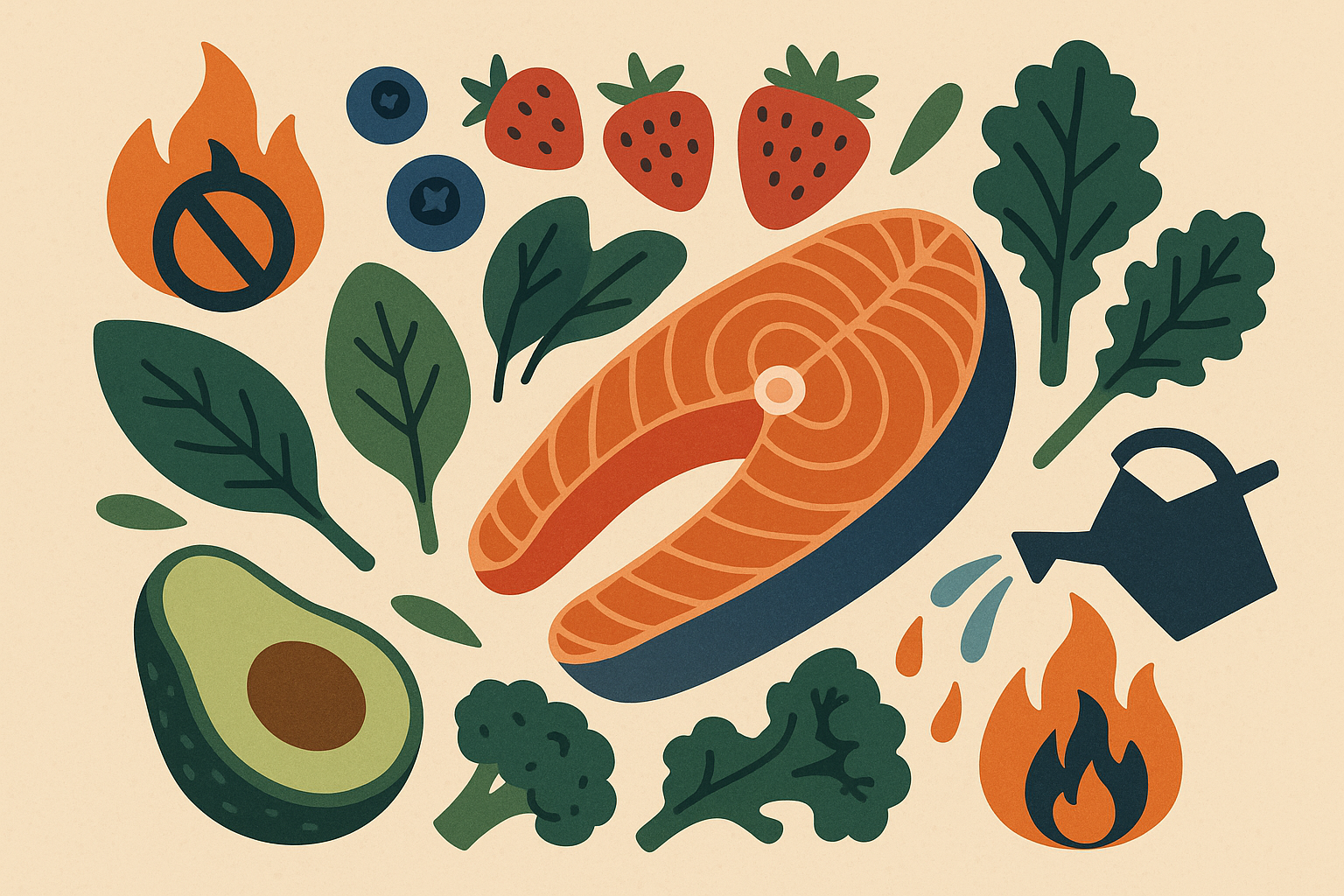
Turmeric, leafy greens, fatty fish, and berries contain compounds that actually reduce inflammation in your body. It’s like having a maintenance crew working behind the scenes to keep your metabolism running smoothly.
Working With Your Digestion Instead of Against It
Your digestive system uses a surprising amount of energy to break down food. Different food combinations require different amounts of this energy, so being smart about how you pair foods can actually free up energy for other things (like not feeling exhausted after every meal).
Food Pairing That Actually Makes Sense
Some foods play well together and make digestion easier, while others create more work for your system. When you pair foods strategically, you’re not fighting your body’s natural processes – you’re working with them.
My friend Tom discovered that pairing his iron-rich spinach with vitamin C sources (like red peppers) tripled his iron absorption. Two cups of spinach (14 calories) plus one cup of red peppers (46 calories) = way more energy and no more afternoon crashes. Simple math, big results.
Fat-soluble vitamins (A, D, E, K) need some dietary fat to be absorbed properly, which is why adding a little avocado or olive oil to your veggie-heavy meals isn’t just tasty – it’s smart. Water-soluble vitamins (B-complex, C) are easier and absorb best when you’re well-hydrated.
Your Brain on Food: Why You Keep Sabotaging Your Own Success
The biggest meal plan saboteur isn’t your willpower – it’s your brain chemistry. Most people focus entirely on the physical side of eating while completely ignoring the powerful neurological patterns driving their food choices. Understanding how your brain responds to food is just as important as calculating macros, maybe more so.
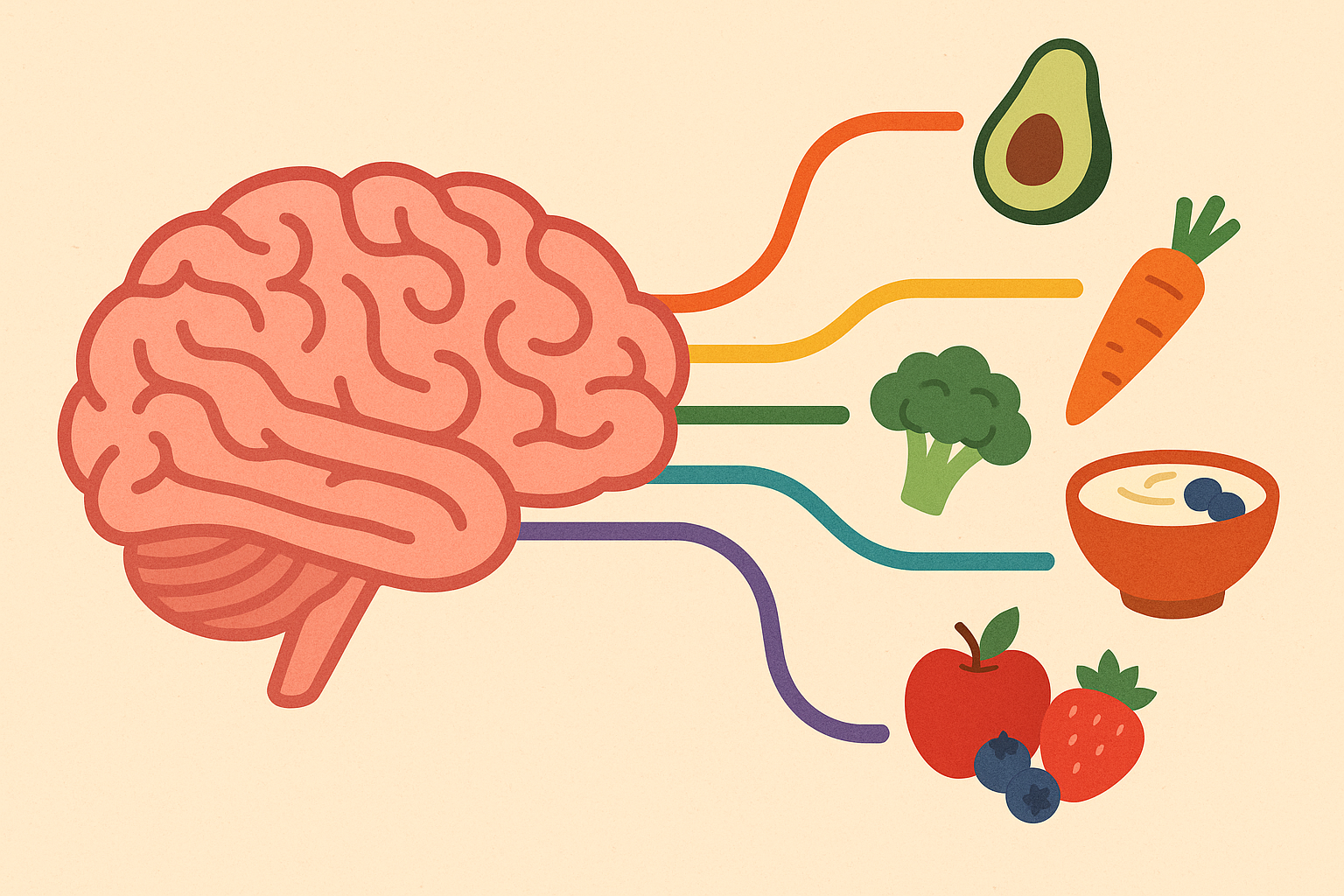
Your brain processes food as both fuel and reward, creating these complex feedback loops that can either support your goals or completely hijack them. Those dopamine pathways that light up when you eat certain foods? They can override all your logical meal planning in about two seconds flat.
Working With Your Brain’s Reward System (Instead of Fighting It)
Your brain releases dopamine when you eat, creating cravings and satisfaction signals that are way more powerful than any meal plan. Instead of trying to fight this system with pure willpower (spoiler alert: that doesn’t work long-term), I learned to work with it by designing meals that naturally keep these pathways happy.
The Protein Satisfaction Hack
Certain amino acids in protein send cascading signals to your brain that you’re full and satisfied. When you get protein timing right, most of those between-meal cravings just… disappear. It’s not about willpower – it’s about biochemistry.
Here’s what actually works:
- Get 25-30g protein within an hour of waking up (this sets the tone for your whole day)
- Space protein every 3-4 hours (prevents the hangry monster)
- Choose complete proteins when possible (eggs, fish, poultry, quinoa)
- Pair protein with fiber-rich veggies (double satisfaction boost)
- End dinner with 20-25g protein (supports overnight recovery)
There’s this amino acid called leucine that’s abundant in animal proteins, and it directly talks to the satisfaction centers in your brain. This is why a protein-rich breakfast keeps you satisfied way longer than a carb-heavy one with the same calories. Science is cool like that.
Strategic Pleasure: Why Completely Restricting “Fun Foods” Backfires
Completely eliminating foods you love from your 2000-calorie plan is like telling yourself not to think about pink elephants. Your brain becomes obsessed with what it can’t have, leading to those epic binge episodes where you eat three days’ worth of cookies in one sitting.
Instead, I build these foods into my plan strategically. When your brain knows it’s going to get something rewarding at predictable intervals, it stops creating those intense cravings and obsessive thoughts about forbidden items. It’s like having a toddler who knows they’ll get dessert after dinner – they stop asking for it every five minutes.
Stopping Stress Eating Before It Takes Over
Stress eating isn’t a character flaw – it’s your body’s physiological response to elevated cortisol levels. I’ve learned specific strategies that interrupt this cycle at the biochemical level, helping me stick to my caloric goals even when life gets crazy.
Understanding where your body stores tension can reveal important connections between your emotional patterns and eating behaviors. Physical tension patterns often correlate with specific food cravings and triggers.
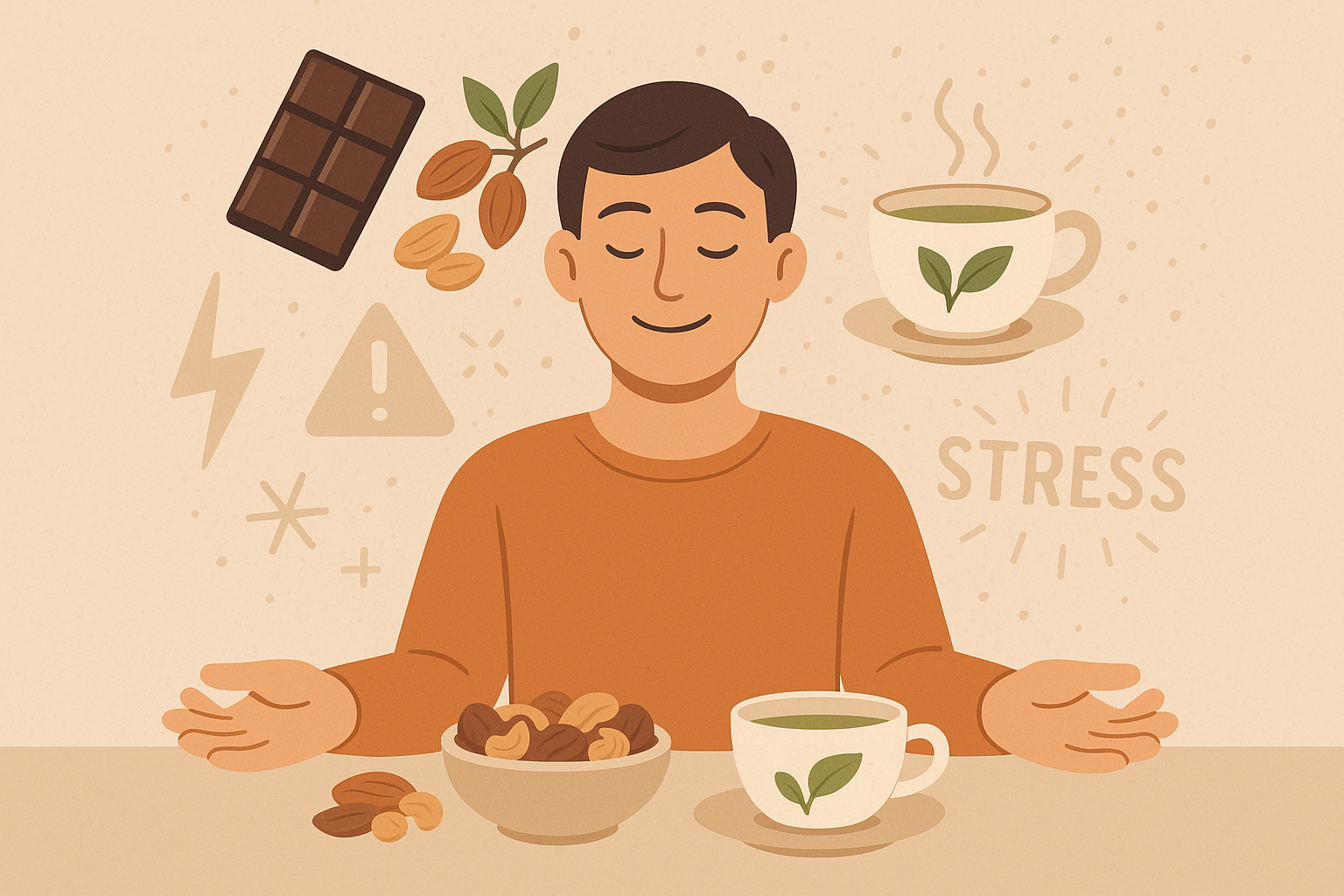
Adaptogenic Foods: Your Stress-Eating Insurance Policy
Certain herbs and foods help regulate cortisol and support your body’s resilience to stress. By incorporating these into my 2000-calorie framework, I’ve created a buffer against those stress-induced eating patterns. These foods don’t just provide calories – they actively support emotional stability.
Ashwagandha, rhodiola, and holy basil can be added to smoothies or teas without significantly impacting your calorie budget. They help normalize your stress hormone rhythms, which reduces the likelihood of those “I must eat everything in the pantry right now” moments.
Blood Sugar Stability: The Secret to Preventing Cravings
Those energy crashes from unstable blood sugar are major triggers for grabbing whatever’s convenient (usually something you’ll regret later). I maintain steady glucose levels through smart macro timing, preventing the energy dips that lead to poor food choices.
My friend Maria is a nurse working 12-hour shifts, and she used to live off vending machine snacks during her breaks. She started pairing complex carbs with protein every 4 hours (apple with almond butter = 190 calories), which prevented those energy crashes and saved her over 400 calories daily from impulsive snacking. Simple change, huge results.
Adding cinnamon to your morning oats or coffee provides metabolic benefits without any extra calories. Chromium (found in broccoli and whole grains) also naturally supports glucose metabolism.
Why Your Friend’s Amazing Results Won’t Work for You (And That’s Totally Normal)
The most frustrating part of meal planning is trying someone else’s “proven” system only to get completely different results. This used to drive me crazy until I realized we all process food differently based on our genetics, gut bacteria, and individual metabolic quirks.
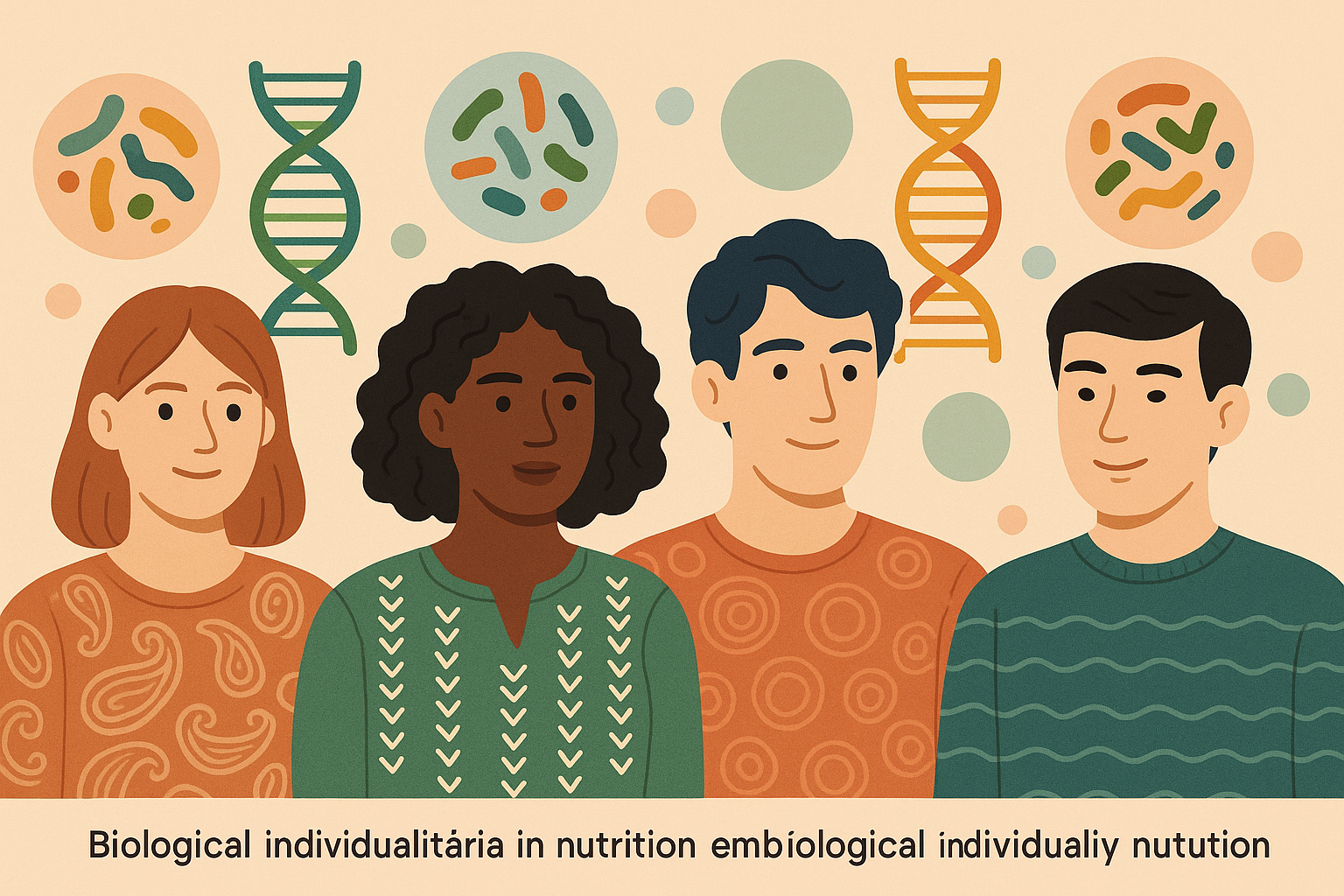
Understanding your unique biological blueprint is the key to creating a 2000-calorie plan that actually works for YOUR body. What works brilliantly for your coworker might leave you feeling sluggish and gaining weight, even with identical calorie intake. And that’s completely normal – not a personal failing.
Your Personal Food Processing Blueprint
Your DNA influences how efficiently you process carbs, fats, and proteins, which means some standard meal plan recommendations might be completely wrong for your body. Through simple self-assessment (no expensive testing required), you can figure out your personal patterns and adjust accordingly.
Figuring Out Your Carb Sweet Spot
Some people thrive on higher carb intakes while others feel sluggish and gain weight eating the exact same foods. By paying attention to how your body responds, you can determine your personal carb tolerance and distribute your calories accordingly.
Try this simple self-assessment:
- Track your energy 1-2 hours after eating 50g+ carbs
- Notice your mood throughout the day on higher vs. lower carb days
- Pay attention to sleep quality after carb-heavy dinners
- Observe morning hunger levels after different evening carb amounts
- Notice how you feel during workouts following carb-heavy meals
Apparently some people are just better at digesting starches because of their genes (something called AMY1 gene variations). This explains why my pasta-loving Italian friend stays skinny while I look at bread and gain weight. Genetics are weird but helpful to understand.
Your Gut Bacteria: The Hidden Calorie Processors
The trillions of bacteria in your gut significantly influence how many calories you actually extract from food and how efficiently your body uses them. Two people eating identical 2000-calorie meal plans can have completely different outcomes based on their microbiome composition. Mind-blowing, right?
Learning about drinking vinegars for gut health can provide additional support for optimizing your microbiome alongside your meal plan. Apple cider vinegar and other fermented vinegars support beneficial bacteria growth while improving nutrient absorption.
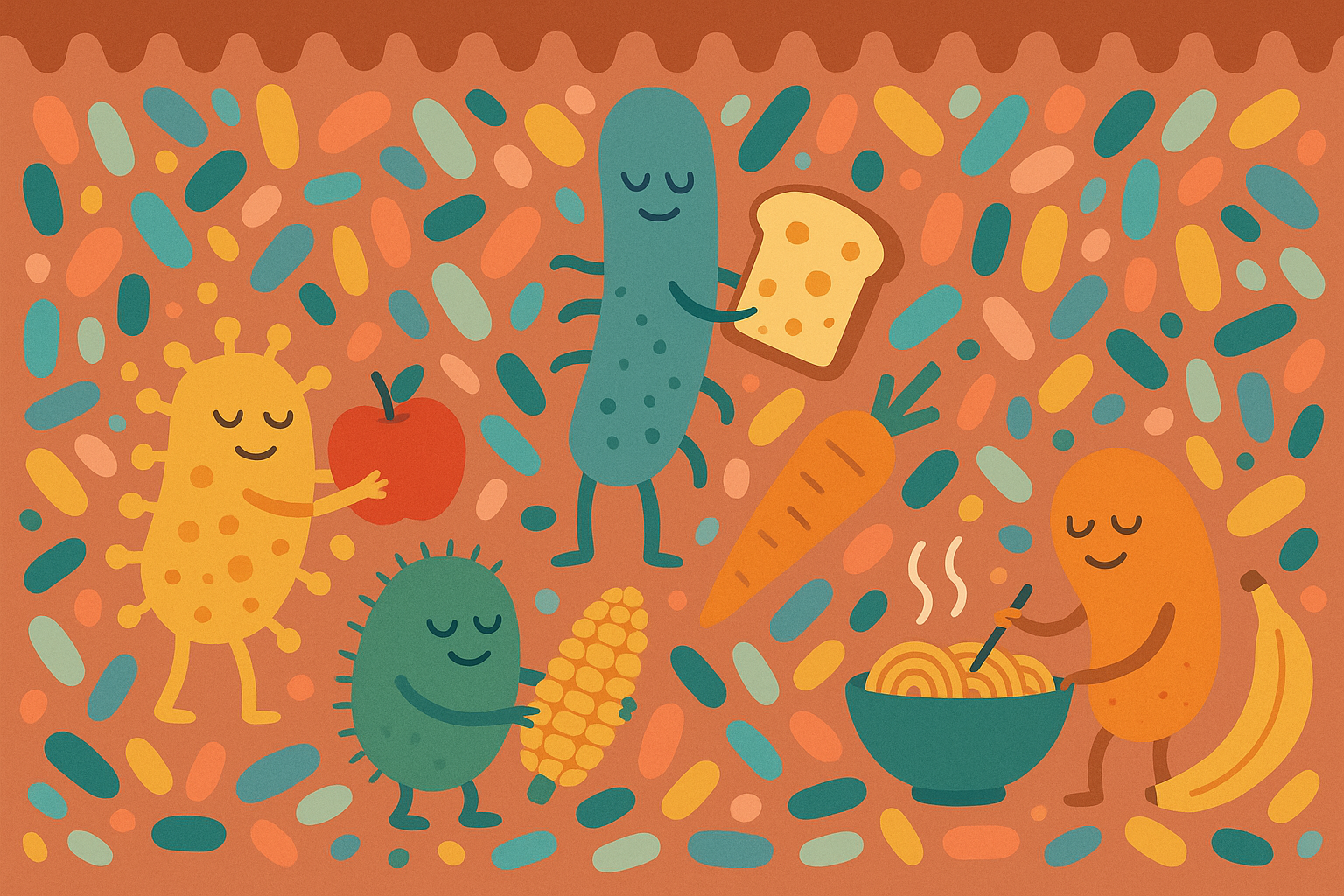
Supporting gut health has become central to my meal planning success. Your microbiome composition determines everything from vitamin synthesis to inflammation levels to neurotransmitter production. It’s like having a whole ecosystem in there that either supports your goals or works against them.
Strategic Prebiotic and Probiotic Integration
I dedicate specific calories toward foods that feed the good bacteria, which improves overall nutrient absorption and metabolic efficiency. It’s like investing in your internal support team – they help you get more out of every calorie you eat.
Prebiotic fibers from Jerusalem artichokes, garlic, and onions feed beneficial bacteria that produce short-chain fatty acids. These compounds directly influence metabolism and can improve insulin sensitivity by up to 30%. Pretty cool that eating more garlic can actually help your body process food better.
The Fermented Food Game-Changer
Fermented foods enhance your digestive capacity and make nutrients more available to your body, essentially making your 2000 calories work harder for you. I’ve moved beyond just eating yogurt and created a diverse fermented food approach that actually supports digestive health.
Kimchi, sauerkraut, and kefir introduce live cultures that compete with harmful bacteria while producing beneficial compounds. These foods are typically only 10-30 calories per serving but provide outsized metabolic benefits. It’s like getting VIP treatment for your gut without blowing your calorie budget.
How to Make This Actually Work in Real Life
The difference between meal plans that work short-term and those that create lasting change comes down to building flexible approaches rather than rigid rules. I’ve learned to create adaptable frameworks that can handle real-life challenges – busy schedules, social events, travel, and seasonal changes – while maintaining my nutritional goals.
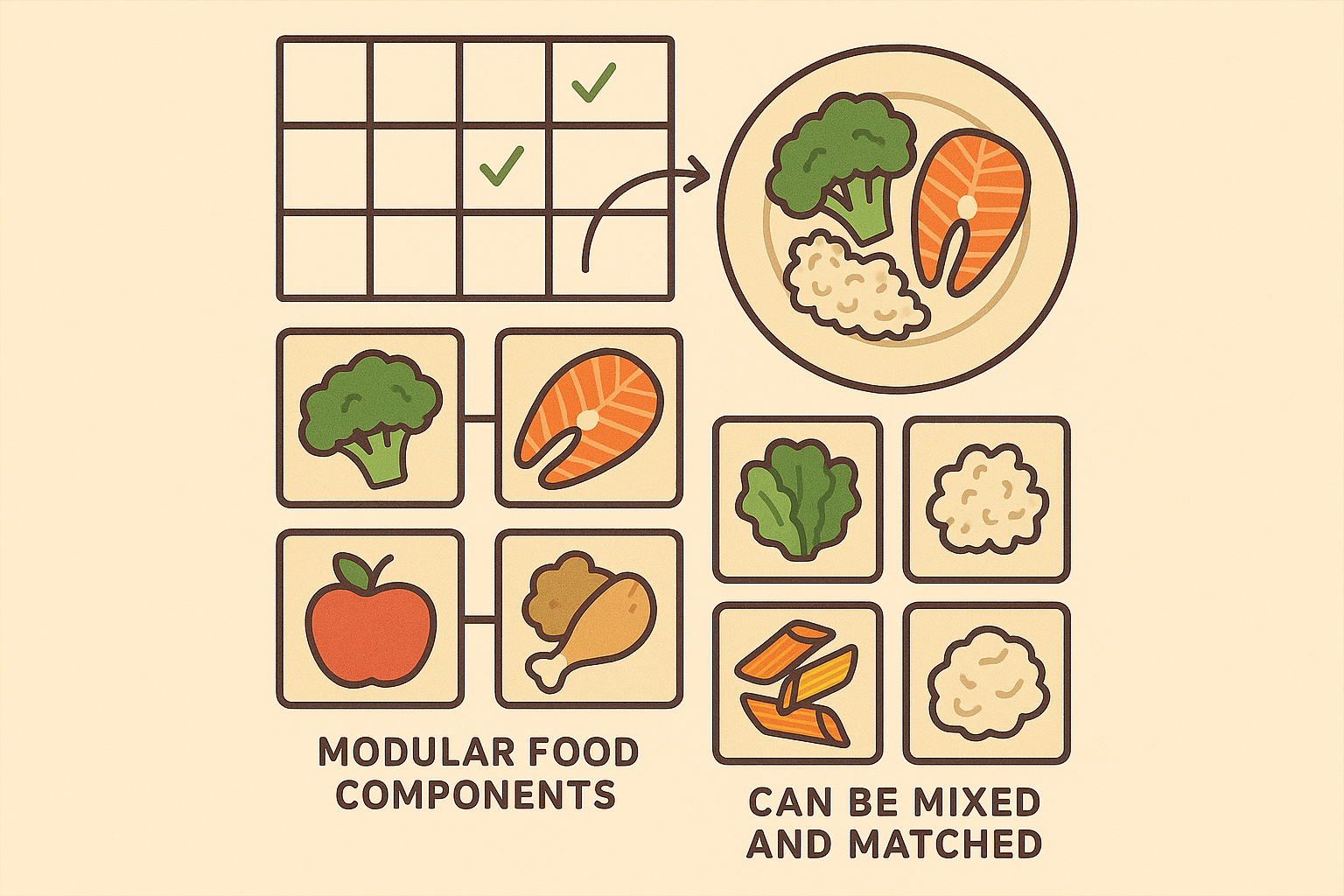
Look, rigidity kills long-term success faster than anything else. Your meal plan needs to bend without breaking when life throws curveballs (and life loves throwing curveballs).
Building Flexibility Into Your System From Day One
The most successful 2000-calorie approaches use modular food systems that can adapt to changing circumstances without completely derailing your progress. This means having backup plans, seasonal adjustments, and social eating strategies built in from the beginning, not scrambled together when you’re already stressed.
Flexibility isn’t the enemy of consistency – it’s what makes consistency possible. When you have predetermined alternatives for different scenarios, you stay in control of your nutrition even when everything else feels chaotic.
Your Emergency Protocol for Crazy Days
Life happens, and your meal plan needs to account for it. I’ve developed specific backup strategies for travel, work deadlines, family emergencies, and social situations that keep me within my caloric goals without sacrificing nutrition quality.
Emergency Day Backup Plan:
- Breakfast: Protein shake + banana (300 calories) – 5 minutes, zero brain power required
- Lunch: Mason jar salad with protein that you prepped when life was calm (450 calories) – grab and go
- Snack: Pre-portioned mixed nuts (200 calories) – no decisions needed
- Dinner: Rotisserie chicken + bag of frozen vegetables (500 calories) – 10 minutes max
- Buffer: Greek yogurt with berries (250 calories) – eat whenever
- Backup plan for your backup plan: Healthy meal delivery service on speed dial
These aren’t “cheat day” strategies – they’re legitimate alternatives that maintain your progress during challenging periods. Having these ready prevents those panic-driven food choices that can undo weeks of consistent effort.
Seasonal Adjustments That Actually Make Sense
Your body’s needs change with the seasons based on activity levels, food availability, and natural rhythm shifts. Instead of fighting these changes, I modify my 2000-calorie approach throughout the year, embracing the variations rather than forcing the same plan year-round.
Exploring 5 simple ways to beat bloat and improve digestion becomes especially important during seasonal transitions when your digestive patterns may shift. Temperature changes and daylight variations actually affect enzyme production and gut function.

Winter months typically call for more warming foods and higher fat intake to support immune function and mood stability (hello, seasonal depression). Summer allows for lighter meals with higher water content and more raw foods that support your body’s natural detox processes. Working with these patterns instead of against them makes everything easier.
Measuring Success Beyond What the Scale Says
Weight loss is just one indicator of meal plan success, and honestly, often not the most important one. I’ve learned to track energy levels, cognitive function, sleep quality, and overall vitality – metrics that better reflect whether my nutritional approach is actually working at the cellular level.
Tracking What Actually Matters
Simple daily observations of mood stability, energy patterns, and physical performance give you way more actionable feedback than weekly weigh-ins. I’ve learned to recognize the subtle signs that indicate my meal plan is working long before changes show up on the scale.
Morning energy levels, afternoon focus, and evening recovery patterns tell a much more complete story about your metabolic health than any single measurement. These indicators respond quickly to nutritional changes, giving you real-time feedback about what’s actually working.
Understanding Your Personal Energy Patterns
Everyone has unique energy rhythms throughout the day, and learning to identify and optimize these patterns using food as a tool can dramatically improve your quality of life. This goes way beyond preventing afternoon crashes – it’s about using nutrition to create sustained vitality and mental clarity.
Simple Daily Energy Tracker:
- Rate your energy 1-10 every couple hours for a week
- Notice which meals preceded your highest energy periods
- Identify your natural low-energy windows (everyone has them)
- Track sleep quality in relation to evening meal timing
- Monitor how sharp your brain feels with different eating patterns
- Record physical performance at various times of day
Does this sound familiar? Most people are surprised to discover how many variables they’ve been completely overlooking.
Here’s what I wish someone had told me when I started: there’s no perfect meal plan. There’s just figuring out what works for YOUR weird, wonderful, complicated body. The goal isn’t perfection – it’s progress. Every small adjustment you make based on how your body actually responds brings you closer to a sustainable way of eating that supports not just weight management, but genuine vitality and well-being.
Listen, you don’t need to become a meal-timing robot or fermented food fanatic overnight. Pick one thing from this that sounds doable and try it for a week. That’s it. Some days you’ll nail it, some days you’ll eat cereal for dinner – both are completely fine. Your 2000-calorie journey is uniquely yours, and embracing that individuality instead of fighting it is what will ultimately lead to lasting success.
If you’re wondering about supplements to support this approach, I’ve found a few that help, but honestly, focus on the food first. The fundamentals matter way more than any pill or powder ever will.

